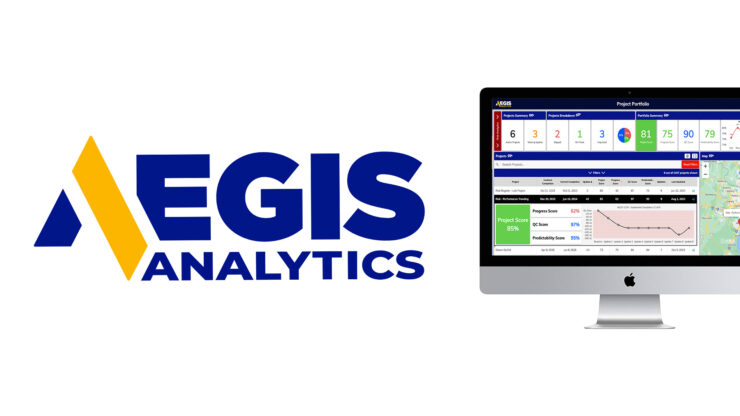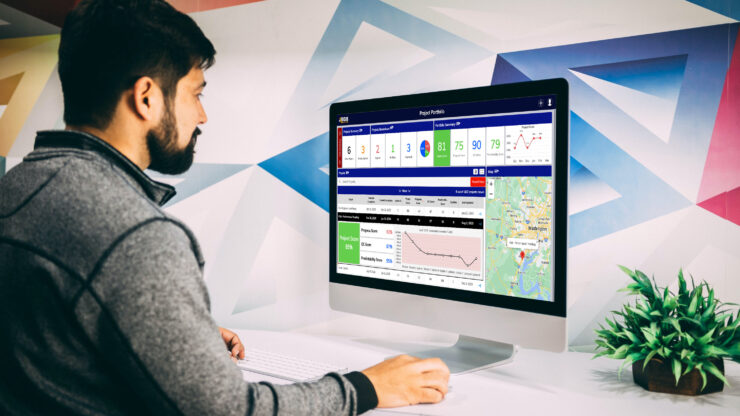
Reprinted with permission from Construction Executive, a publication of Associated Builders and Contractors Services Corp. Copyright 2015. All rights reserved.
In the construction industry, it’s no secret that time equals money; yet construction executives let time slip through their fingers by maintaining the traditional model of monthly project tracking. Increasing project tracking to twice-monthly, weekly or even daily provides clear project benefits – and is achievable through new technology.
Updating a project once a month has several inherent problems. For example, in a one-year project with monthly updates, more than 8 percent of a project elapses each month, leaving the owner and contractor with no way to know the status of the project for the entire duration of the month. As the project moves closer to completion, the issue is exacerbated as the updating process uses a greater percentage of the available time. This results in educated guessing about the end date. Worse, assessing risk at 30-day intervals can make a mountain out of a molehill as waiting a month to identify an issue can result in an unavoidable or exacerbated impact on the project.
More frequent project tracking eliminates the guessing game caused by monthly tracking and provides tremendous advantages. With daily, weekly or bi-weekly tracking, the construction executives and the project team gain a greater understanding of the critical work that must be completed each day and week, and can quickly identify lagging production to improve the efficiency of the contractor or subcontractor. More frequent tracking also provides an opportunity to mitigate issues by quickly identifying problems and forecasting their impact. The earlier a problem is identified, the better the opportunity to minimize the problem before it disrupts the schedule.
While the value in increased tracking is clear, owners and contractors have been reluctant to move forward because of the perceived challenges, such as the amount of work required to update the project status. It is often believed that the work involved consolidating the update data is too time consuming. Often, the reports produced for each update are tedious and offer limited insight. Lastly, the cost of buying and implementing the technological infrastructure has been an impediment to frequent tracking.
In the construction industry, it’s no secret that time equals money; yet construction executives let time slip through their fingers by maintaining the traditional model of monthly project tracking. Increasing project tracking to twice-monthly, weekly or even daily provides clear project benefits – and is achievable through new technology.
Updating a project once a month has several inherent problems. For example, in a one-year project with monthly updates, more than 8 percent of a project elapses each month, leaving the owner and contractor with no way to know the status of the project for the entire duration of the month. As the project moves closer to completion, the issue is exacerbated as the updating process uses a greater percentage of the available time. This results in educated guessing about the end date. Worse, assessing risk at 30-day intervals can make a mountain out of a molehill as waiting a month to identify an issue can result in an unavoidable or exacerbated impact on the project.
More frequent project tracking eliminates the guessing game caused by monthly tracking and provides tremendous advantages. With daily, weekly or bi-weekly tracking, the construction executives and the project team gain a greater understanding of the critical work that must be completed each day and week, and can quickly identify lagging production to improve the efficiency of the contractor or subcontractor. More frequent tracking also provides an opportunity to mitigate issues by quickly identifying problems and forecasting their impact. The earlier a problem is identified, the better the opportunity to minimize the problem before it disrupts the schedule.
While the value in increased tracking is clear, owners and contractors have been reluctant to move forward because of the perceived challenges, such as the amount of work required to update the project status. It is often believed that the work involved consolidating the update data is too time consuming. Often, the reports produced for each update are tedious and offer limited insight. Lastly, the cost of buying and implementing the technological infrastructure has been an impediment to frequent tracking.
New technology is the solution to these challenges, and construction executives that leverage this technology will position themselves well for the future.
The proliferation of cloud services has created technology that allows for real-time project tracking. Using mobile scheduling software, such as Oracle Primavera Team Member, Microsoft Project Server or any number of cloud hosting solutions, allows field trades to update their progress daily or weekly, which significantly reduces the challenge of the additional work burden. With these mobile applications, the progress automatically syncs back to the schedule and produces the status at the end of each day or week. Scheduling software can produce automatic reporting and often can electronically deliver reports on an as-needed or scheduled basis.
Cloud-based dashboards, such as Google Analytics, Oracle Business Intelligence and Aegis Analytics tie directly to schedules to provide visually appealing and pertinent metrics. No longer do executives have to wade through reams of data to find the information they need. The processing power of these online dashboards provide executives and project teams with detailed trending, historical information and drill-down tools – a major improvement over static printed reports. These new cloud-based dashboards are so powerful, they can be set up to manage multiple projects, showing the status of multiple projects in one location. This may be the most important advance for the time-pressed construction executive managing many projects at once.
Advances in technology have improved the ability to track in near real-time the progress of construction projects, and to provide the data in a dynamic format that allows executives to quickly pinpoint successes and issues on a project. The benefits of reviewing the data more than once a month are apparent, and taking advantage of new technology makes it easy to do so.
Recent Posts

The Aegis Companies and Pompeian: A case study in effective construction management

Meet Mike Carey – Senior Vice President of Construction Management

Maximizing the impact of project controls in construction management

Inside Aegis Analytics: Risk Management

Inside Aegis Analytics: Ensuring schedule quality

AACE Region 2 Northeast Symposium: Elevating project management standards with Aegis

Inside Aegis Analytics: Metrics that matter
